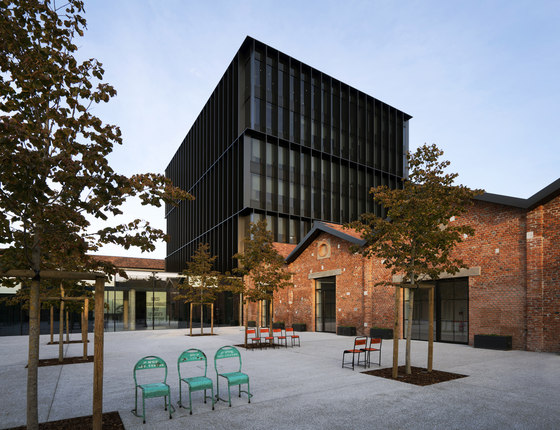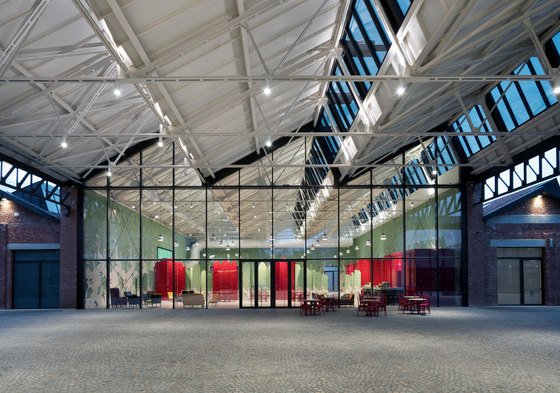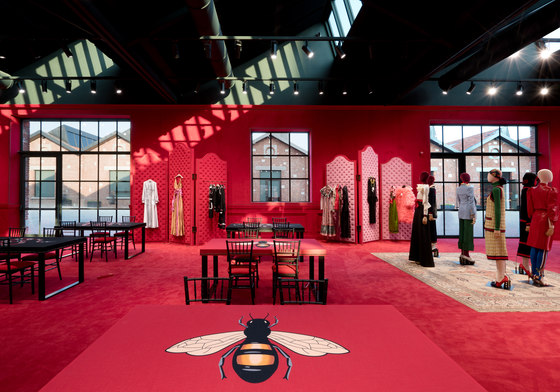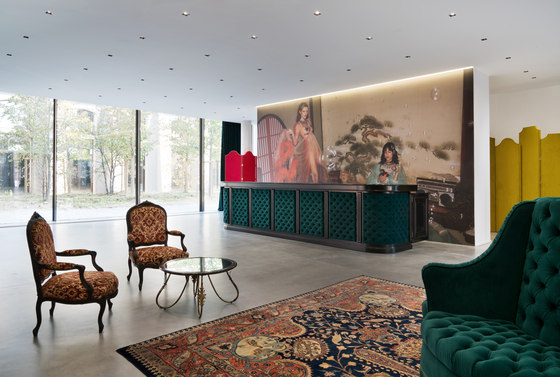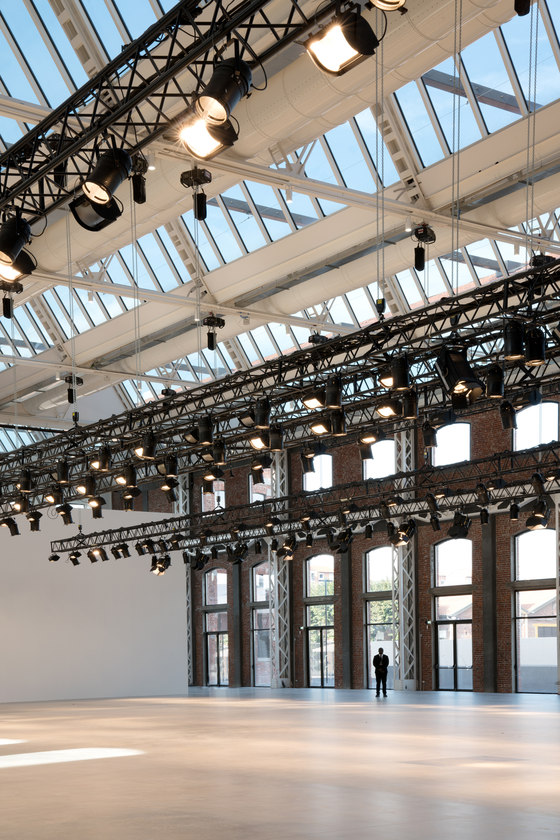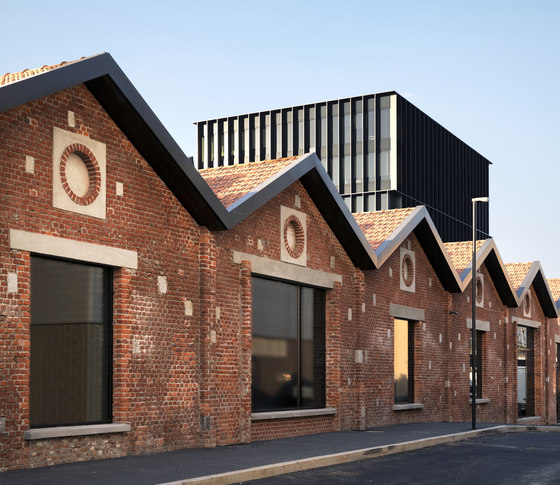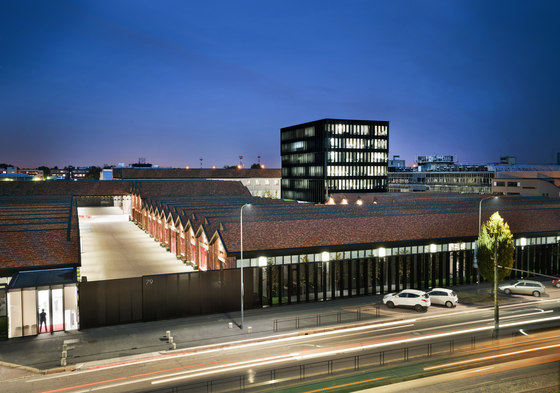The redevelopment project of the old Caproni factory focuses on enhancing the stylistic features of the 1920s’ architecture and aims to transform this old plant into a large complex for Gucci, holding offices, showrooms and spaces for fashion shows and operations connected with graphics, as well as a canteen and restaurant. Recovery and enhancement of the characteristic shed buildings was the first element of the redevelopment project: set out in a regular pattern across the site and featuring modular structural bays, the abandoned industrial warehouses with exposed-brick facades generate, thanks to their spatial layout, a seamless interaction between the inside and outside.
Particular attention was paid to the Hangar recovery, a volume of “exceptional” size, once intended for the final assembly of Caproni aircraft, that is now used to house the fashion shows from 2017. Moreover, the Hangar is enhanced by a large open and covered square connected with the main pedestrian axis facing to via Mecenate. This covered square acts as the core of the pedestrian system that includes a tree-lined square, common gardens, patios and green walls.
Inside the regular layout of solid structures and empty spaces, a new six-storey tower closely interacts with the old construction: characterized by a glass façade covered with a regular pattern of sunscreens, the new building breaks down the site’s symmetry and tends to draw together all the different functions. The new Gucci Headquarters is a 100% sustainable project, with a Leed Gold certification, and considers as the main focus of the workspace the quality of life.
In terms of energy performance, the project has allowed an average of 25% savings on energy costs and a share of the total annual energy cost is offset by renewable energy generated on site through the use of a photovoltaic system and the heating and cooling effectuated by heat pumps using the ground water. A highly advanced water management system allows saving 20% of water for the users management. The entire area also provides an advanced plant management to measure the power consumption of individual systems (such as lighting, heating and cooling). Finally, during the construction, over 90% of waste products were recycled.
Piuarch: Francesco Fresa, Germán Fuenmayor, Gino Garbellini, Monica Tricario, Alessandra Bertoli, Silvia Calzetti, Erica Cazzaniga, Davide Fascione, Niccolò Genesio, Gianluca Iannotta, Luca Lazzerotti, Alessandro Leanti, Mauro Mandelli, Alessandro Marchesetti, Gianni Mollo, Carlos Noriega, Enrico Pellegrini, Paola Sarcoli, Salvatore Seggio, Federico Simonetti, Jenny Spagnolatti, Santiago Trujillo, Beatrice Valle, Yun Xiao and Anna Zauli
